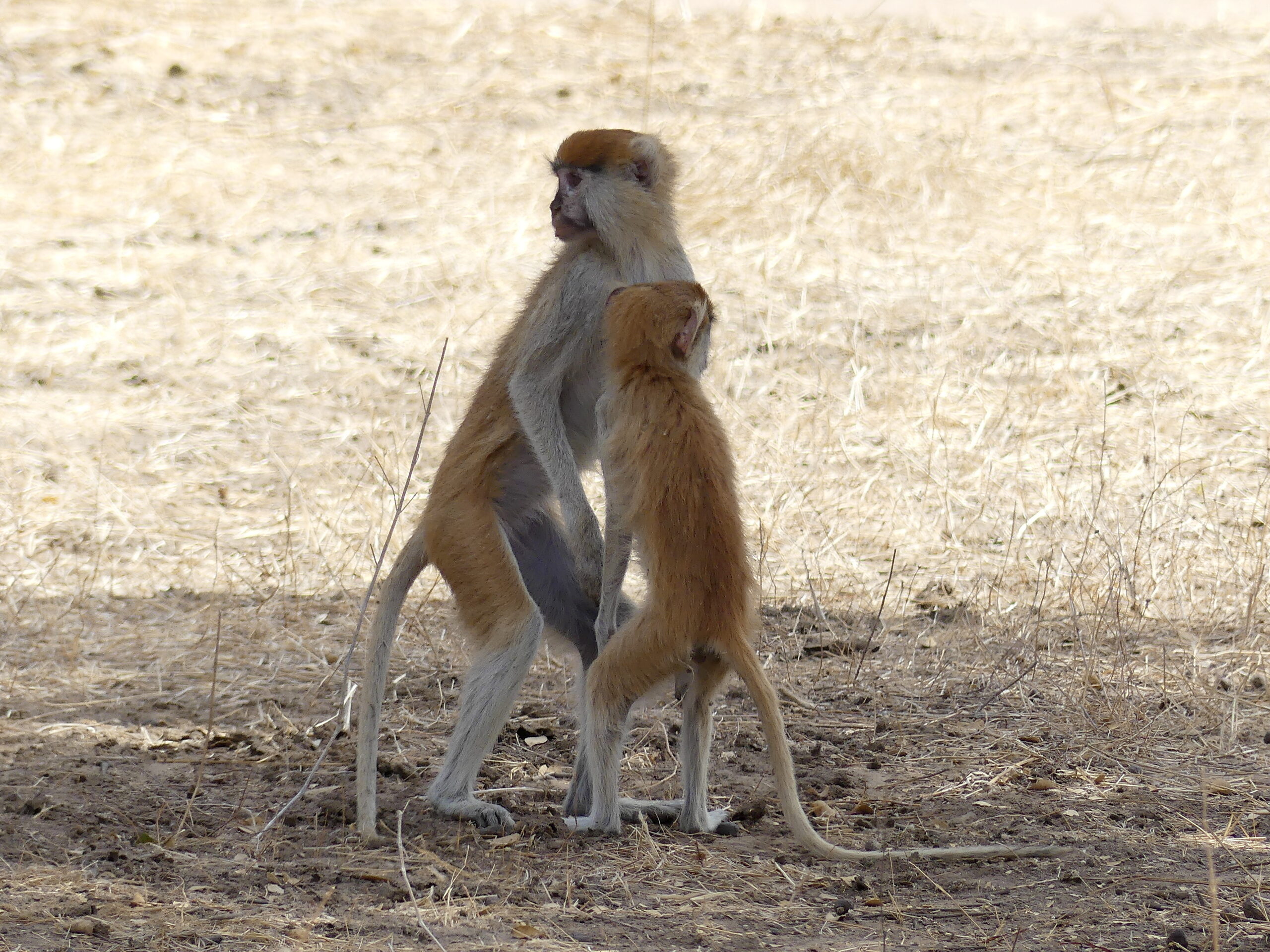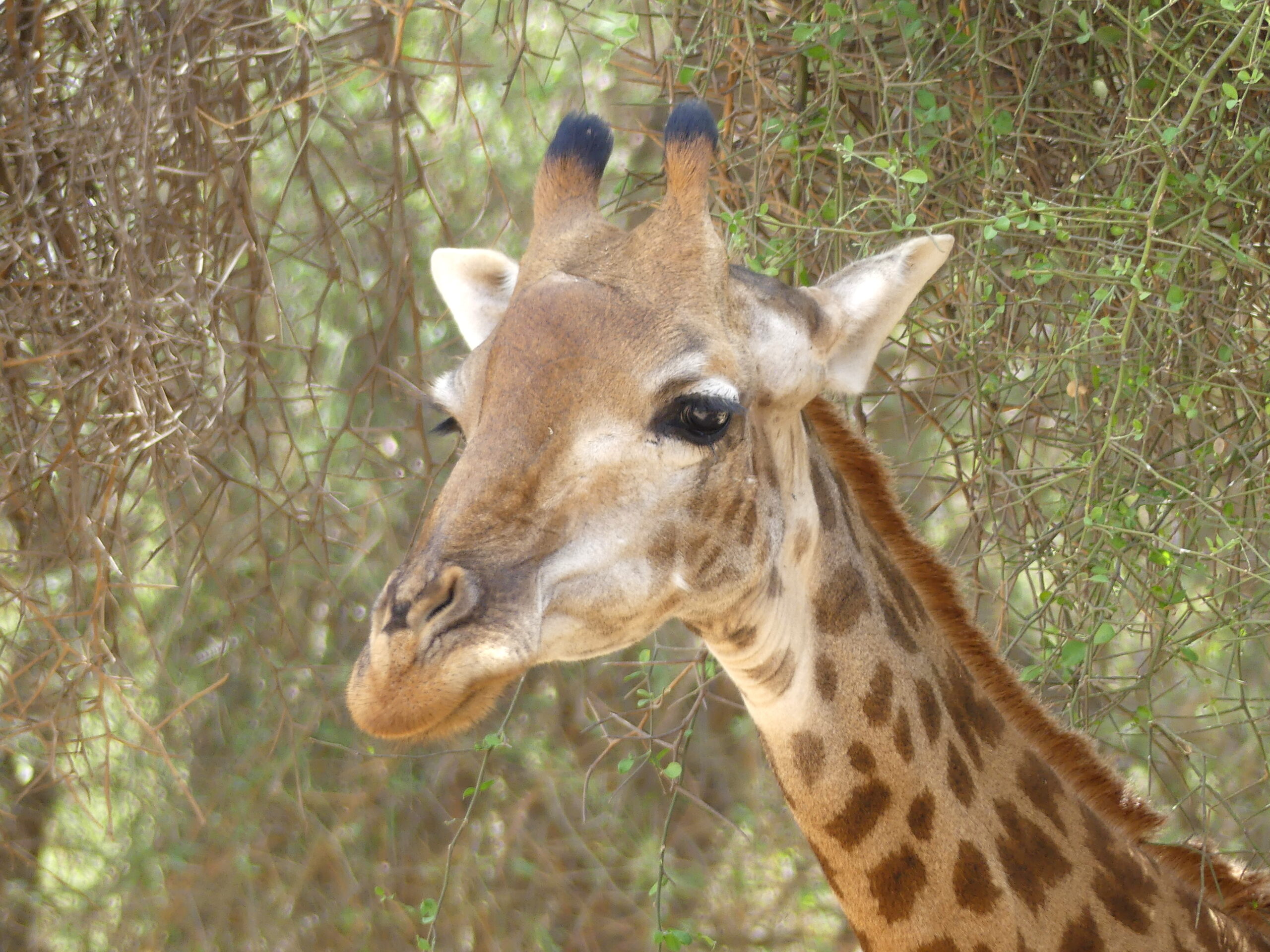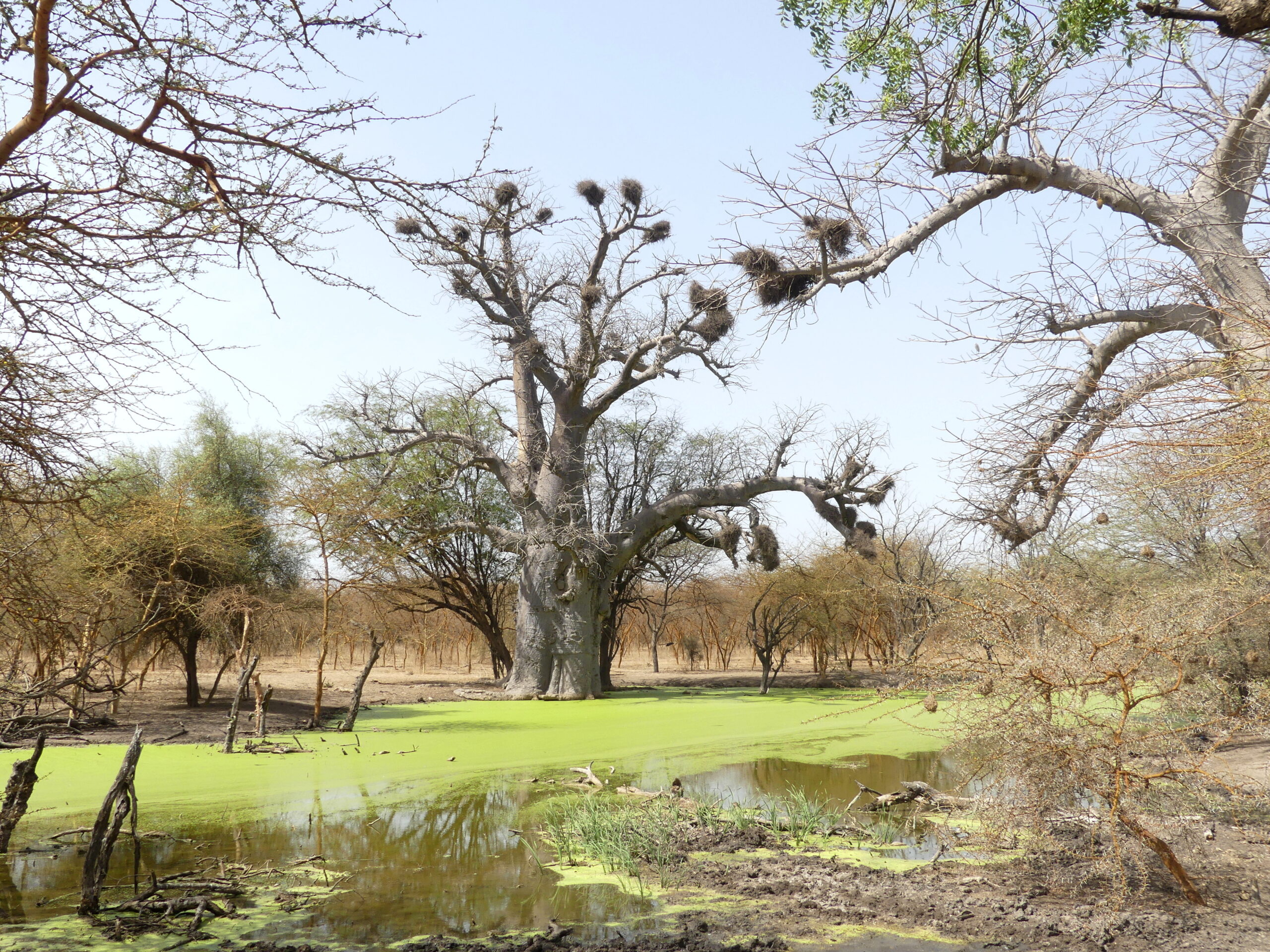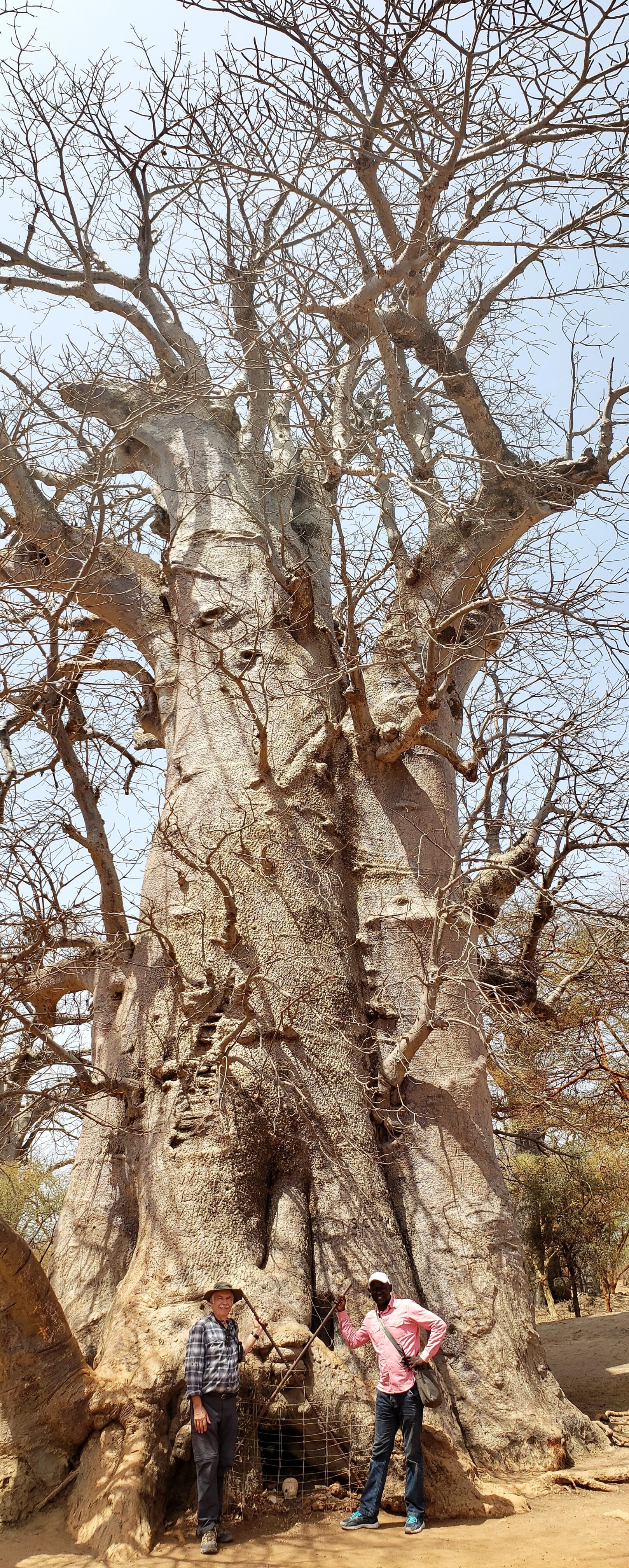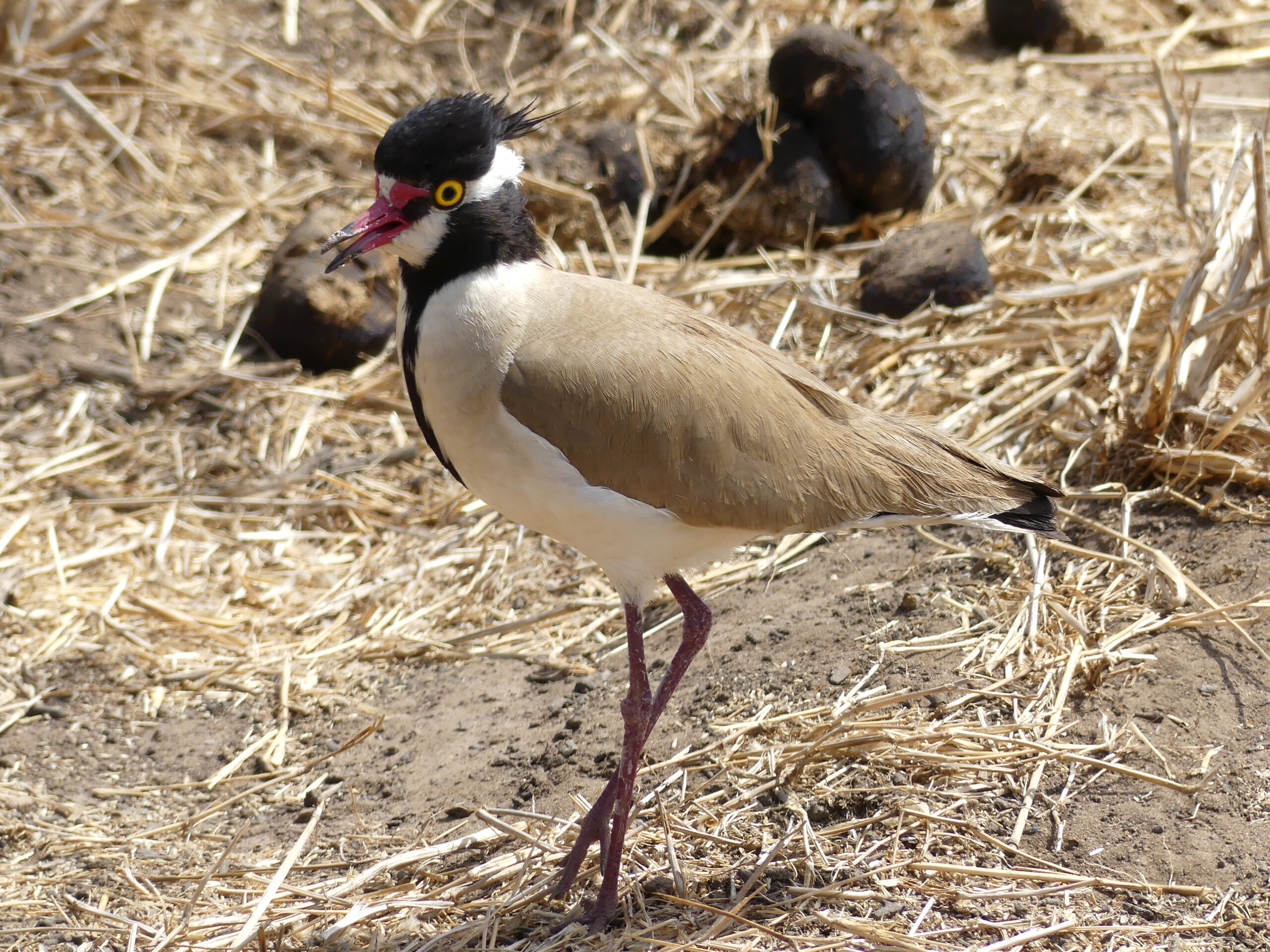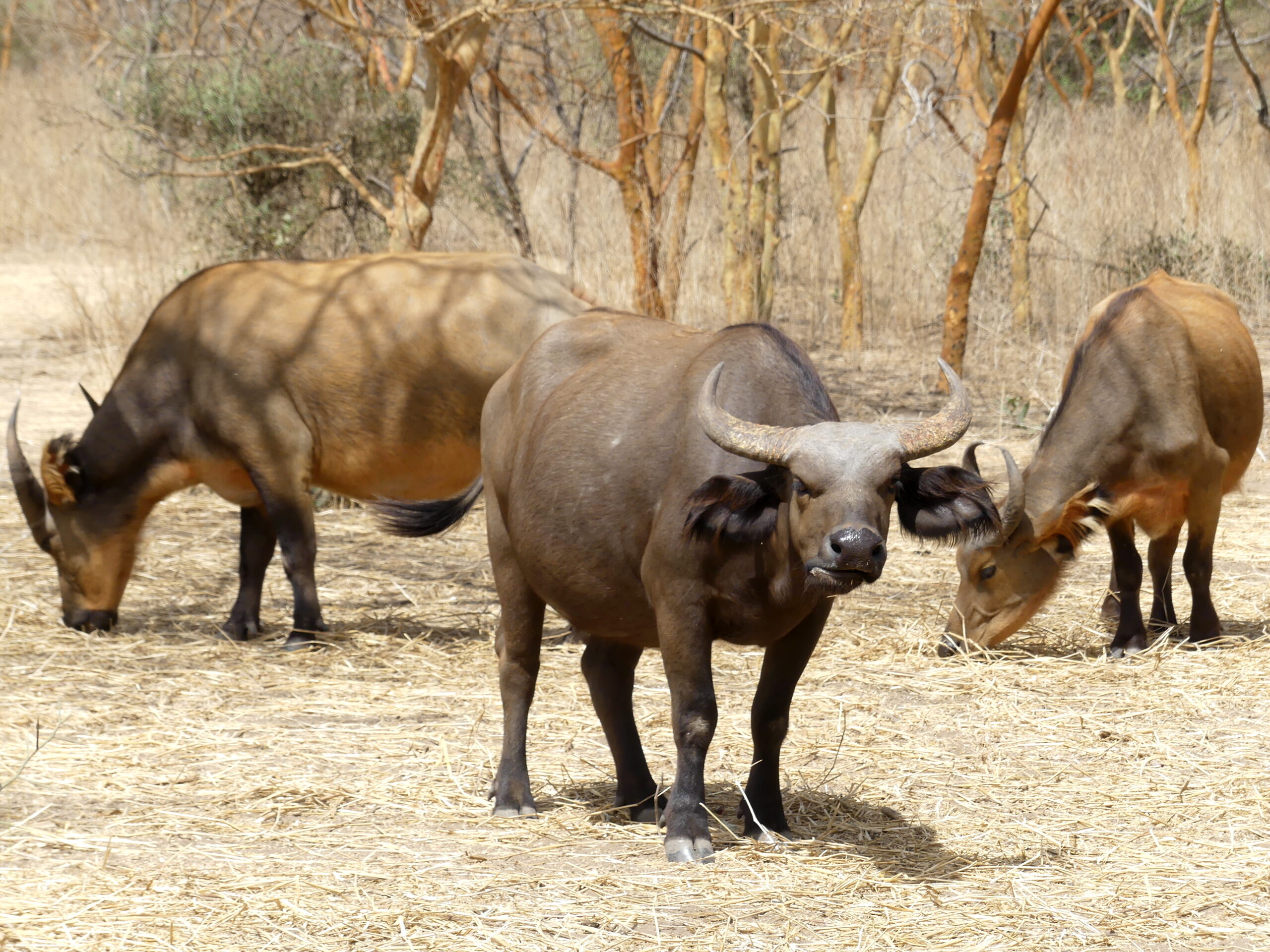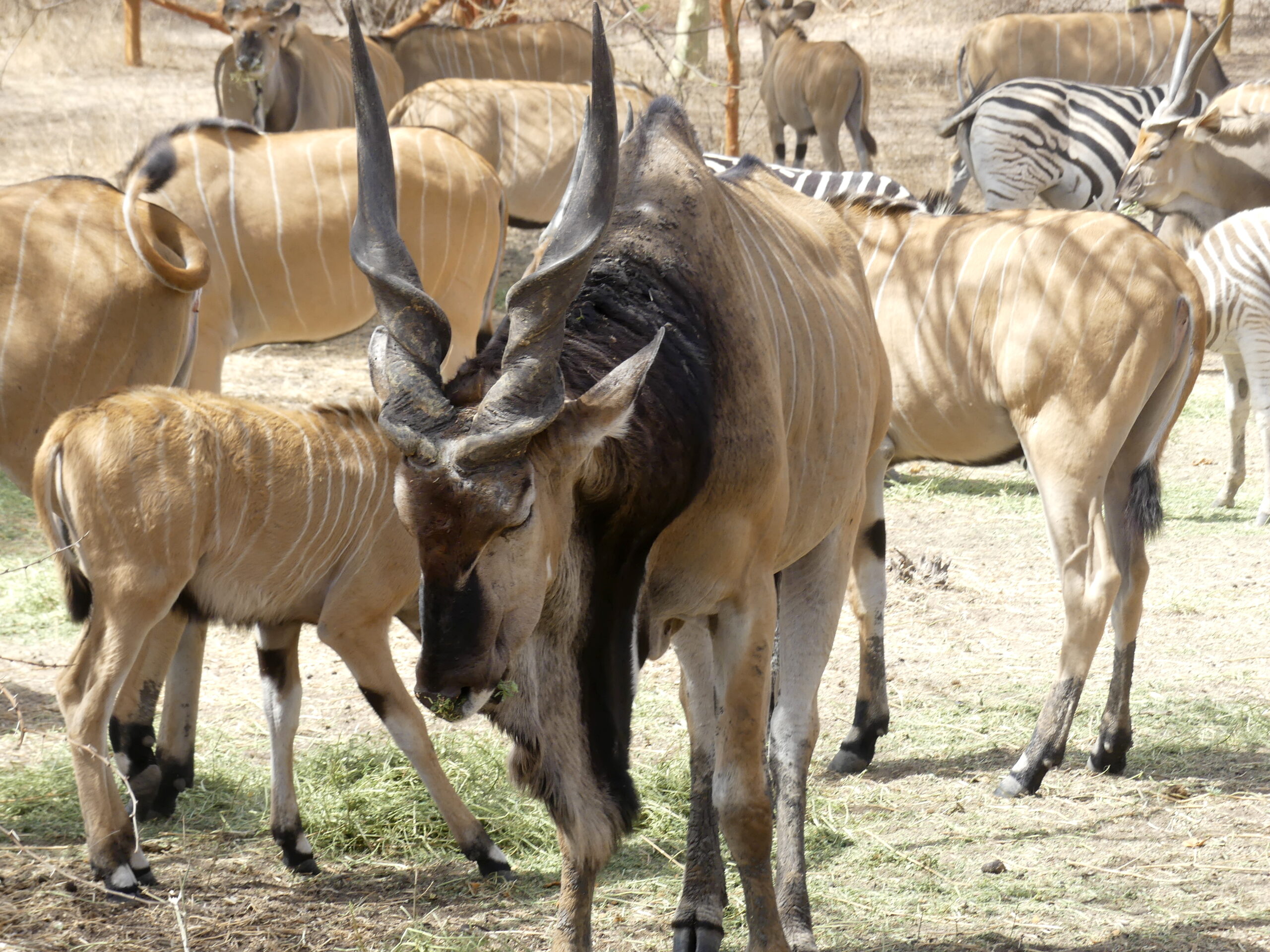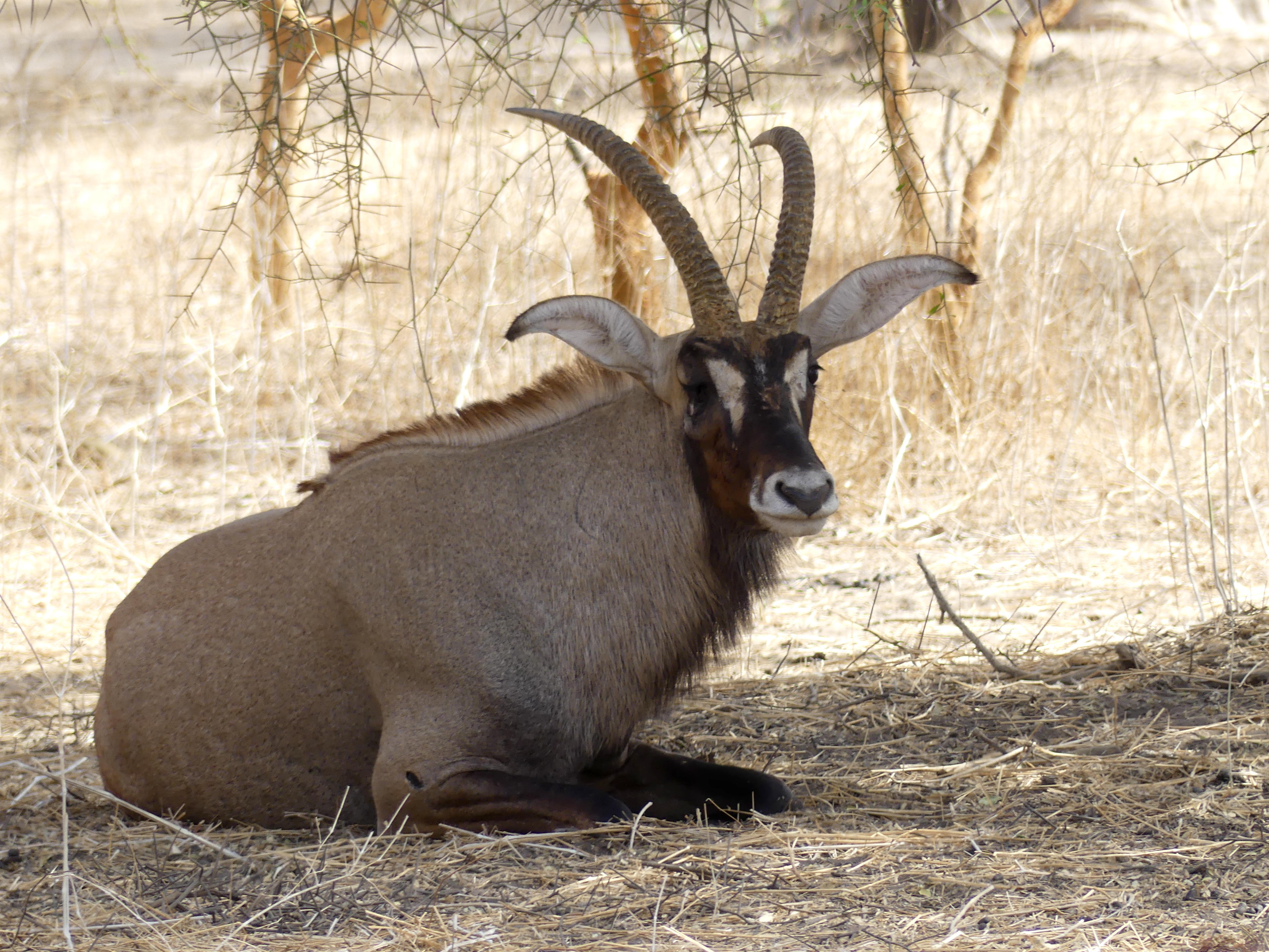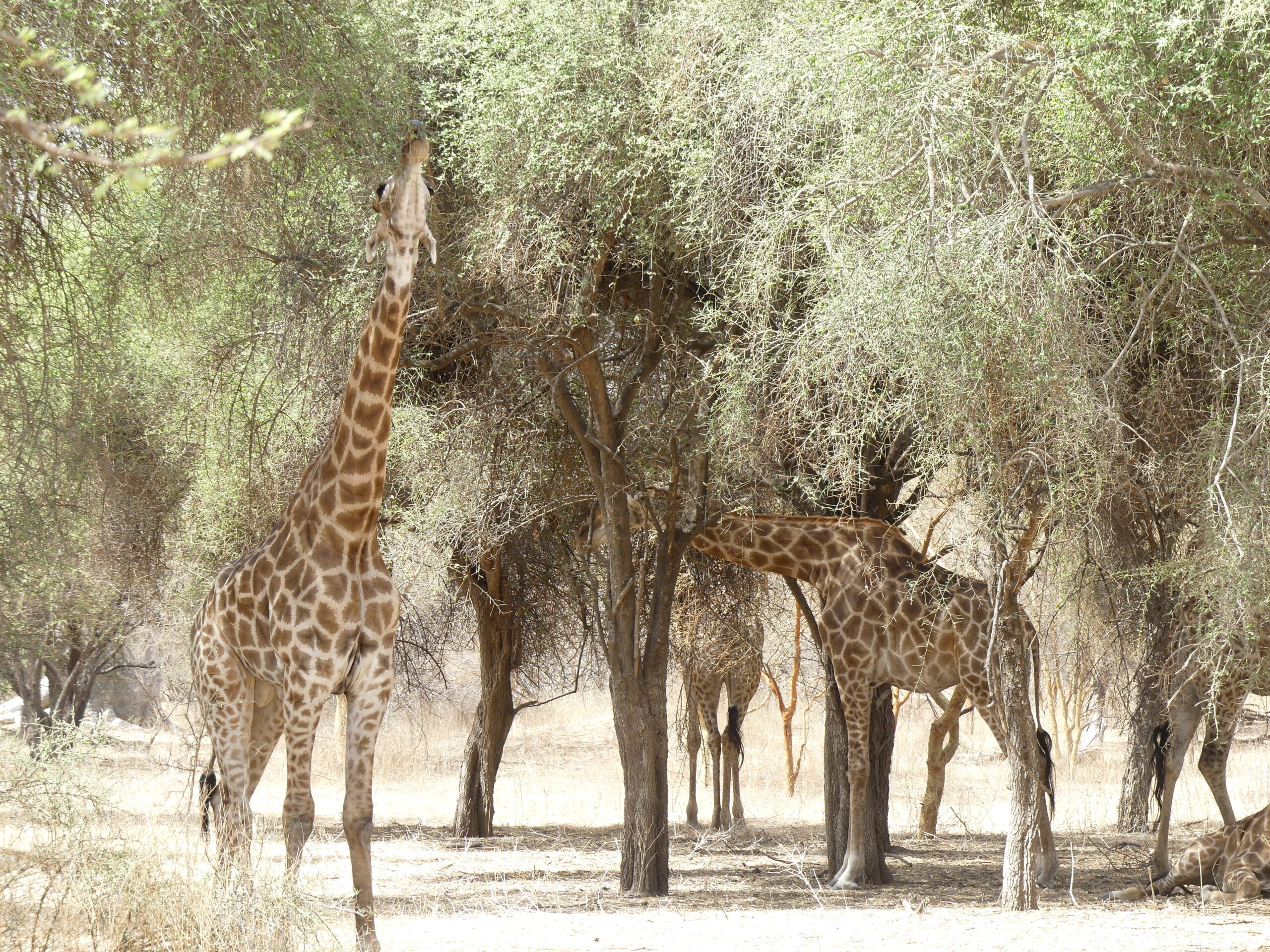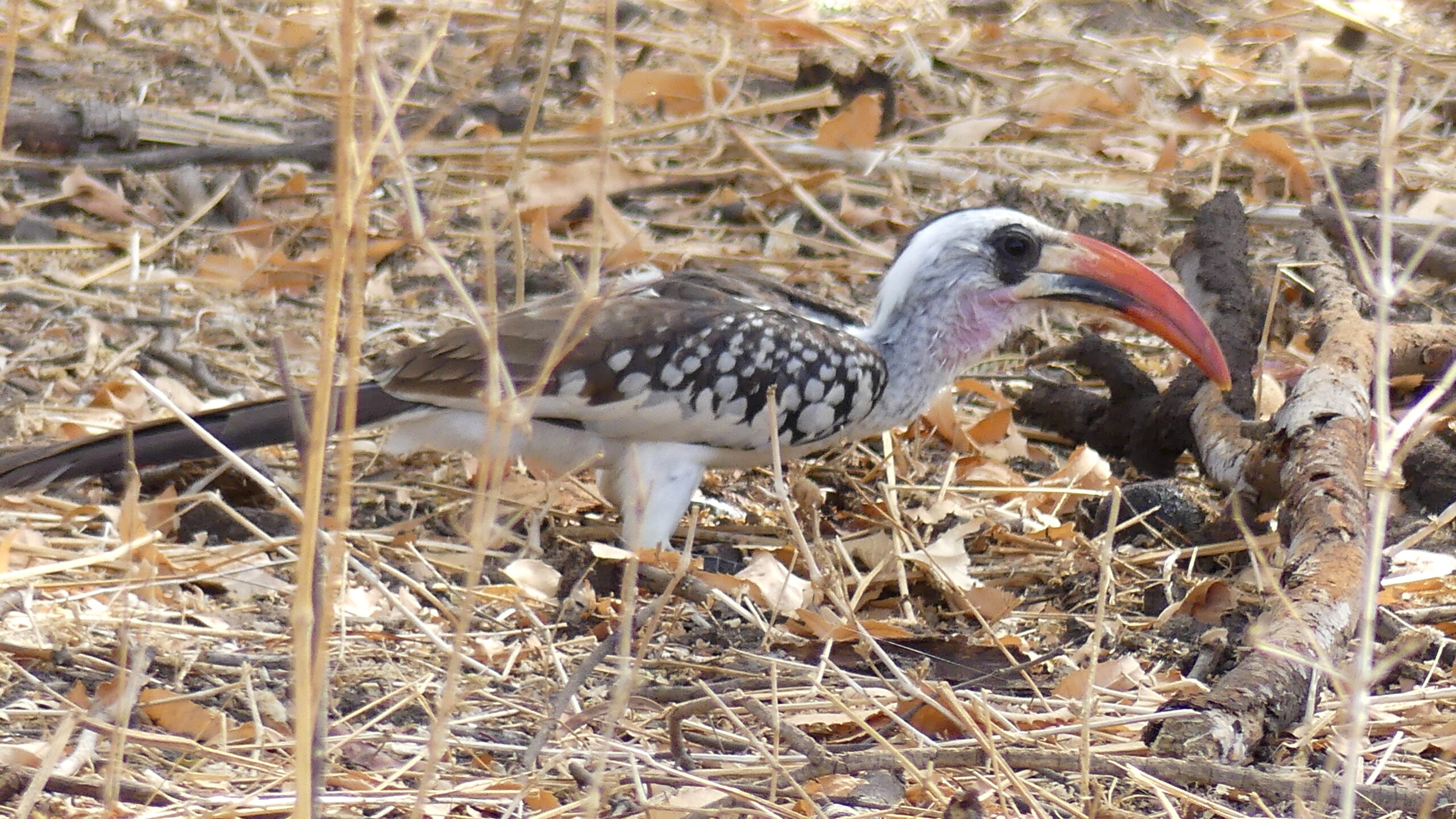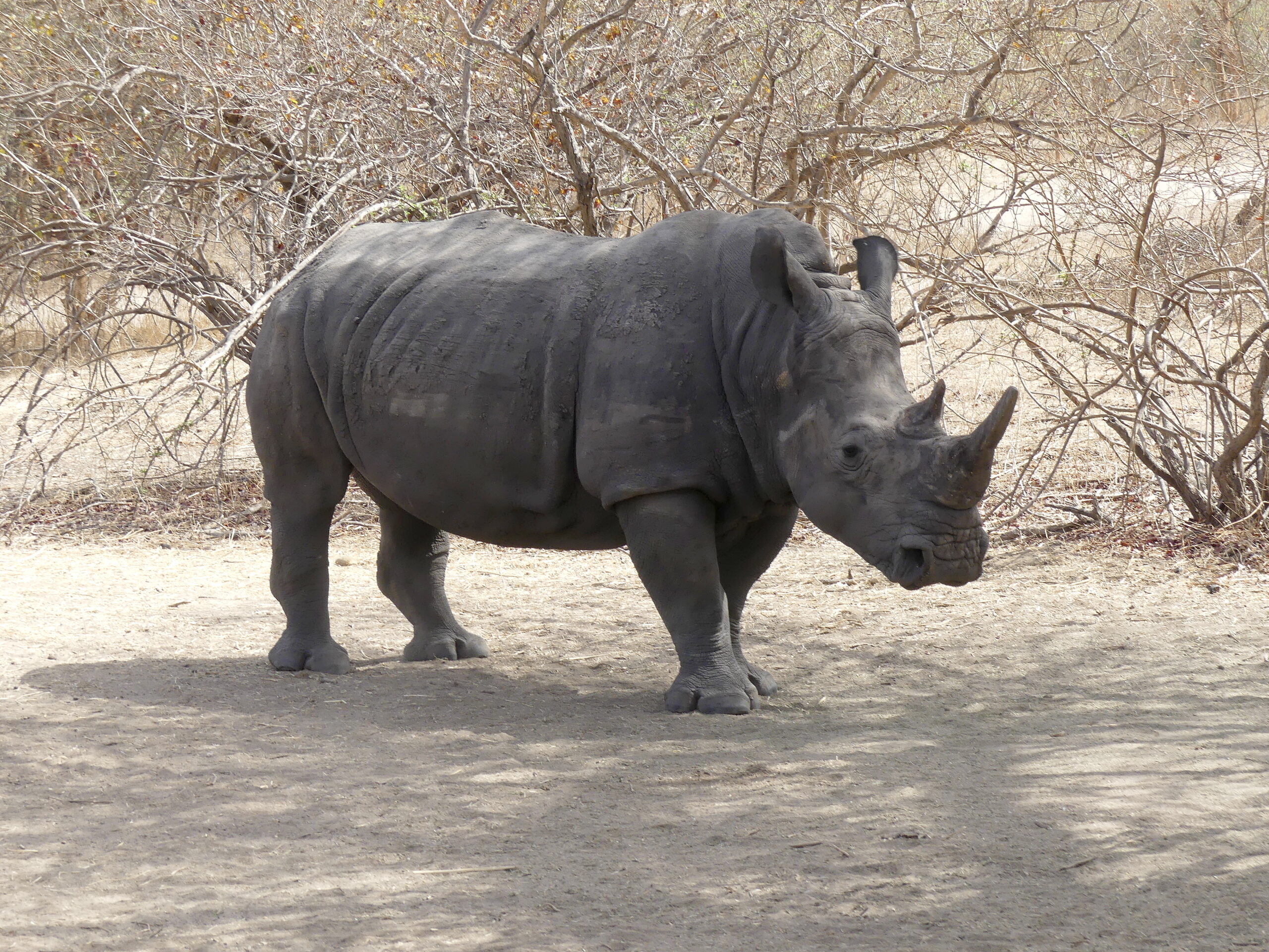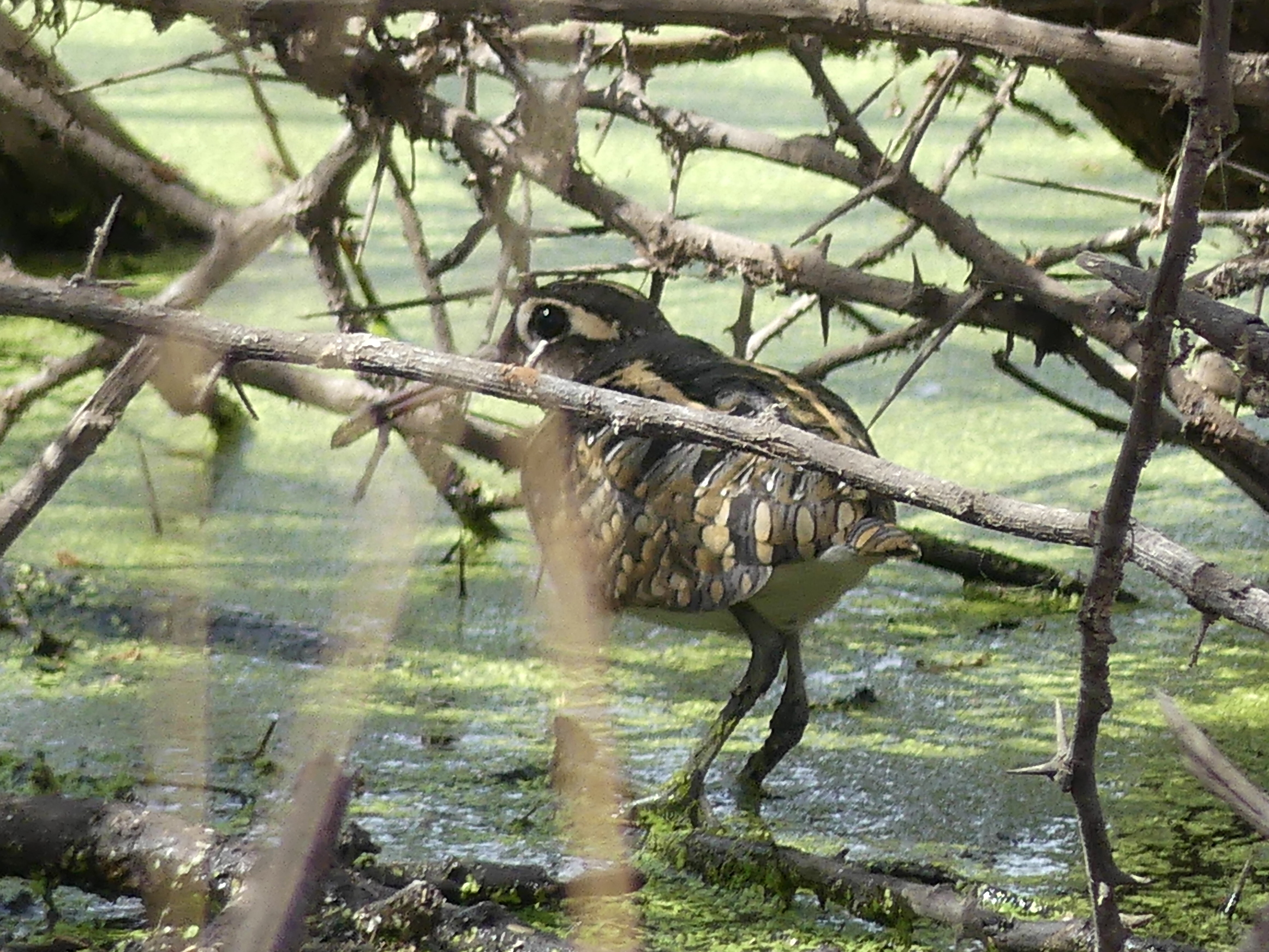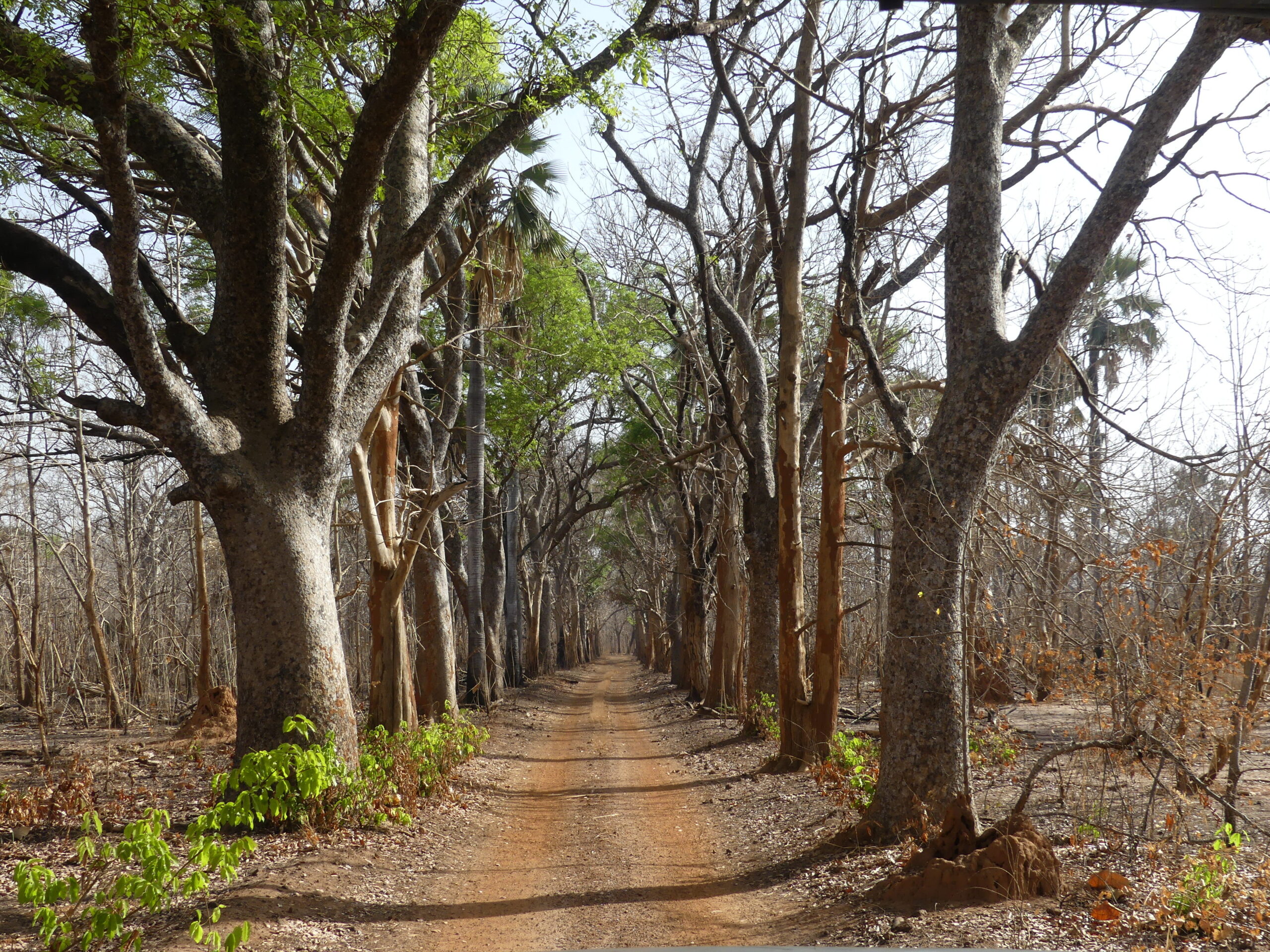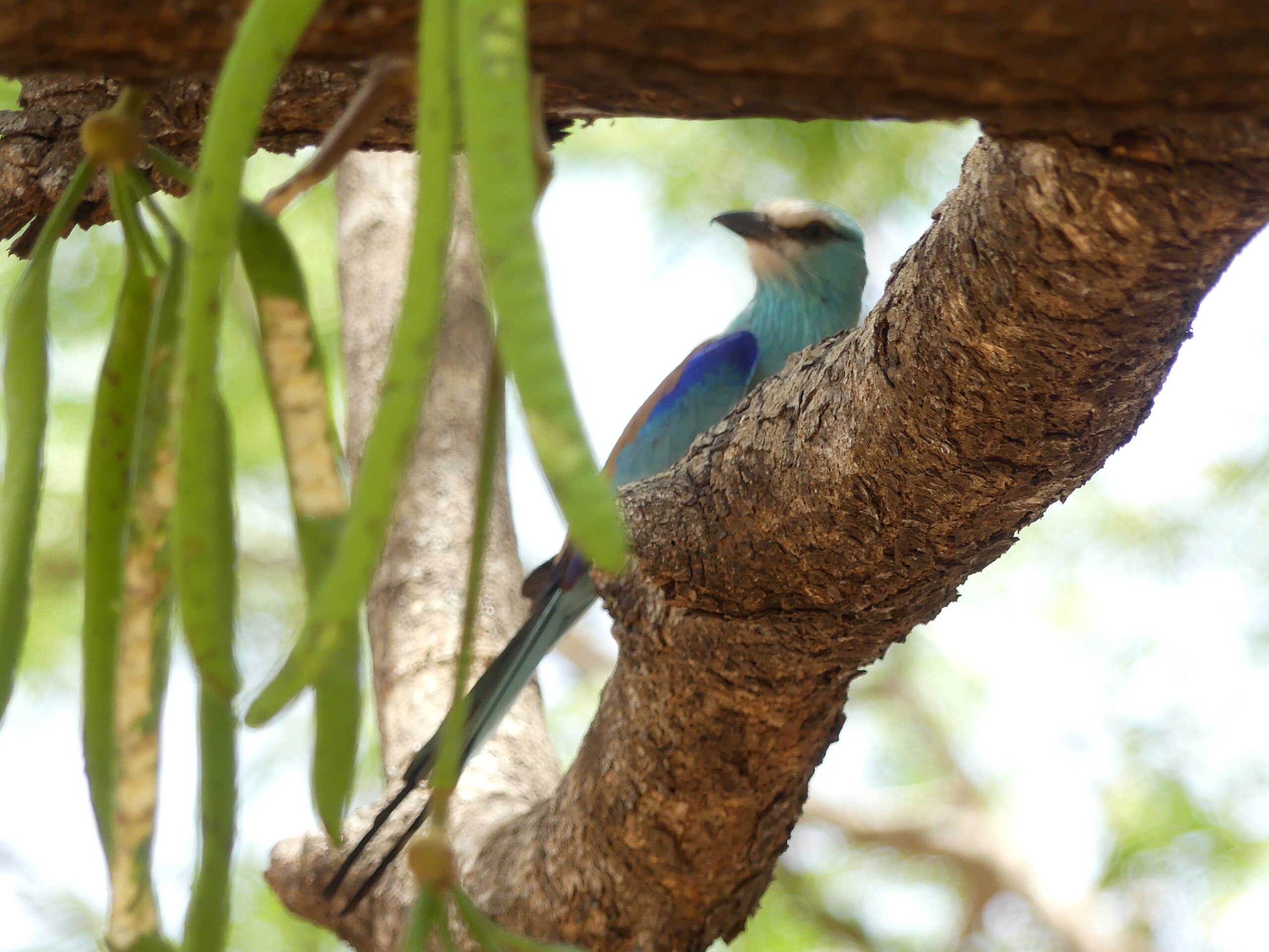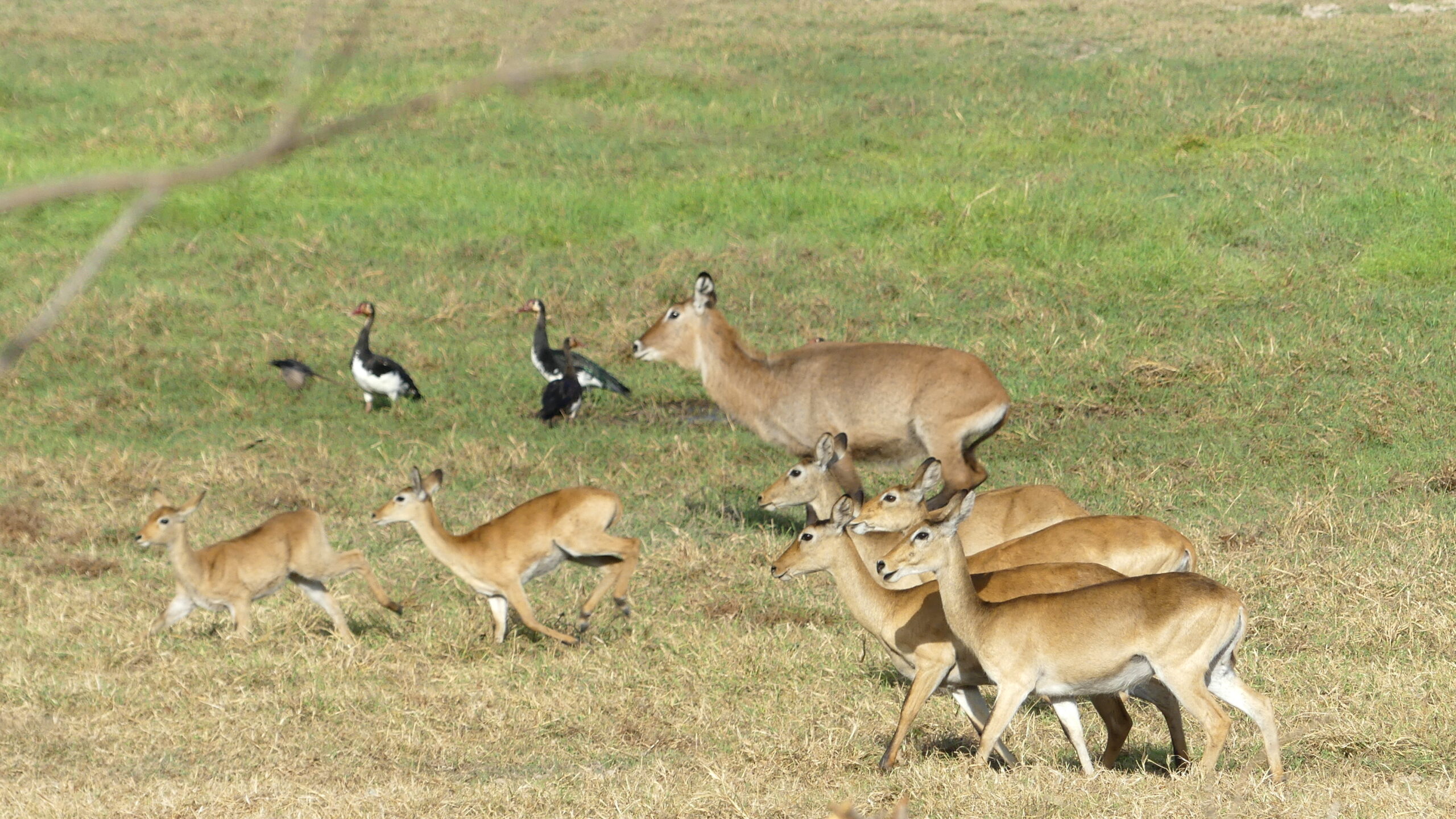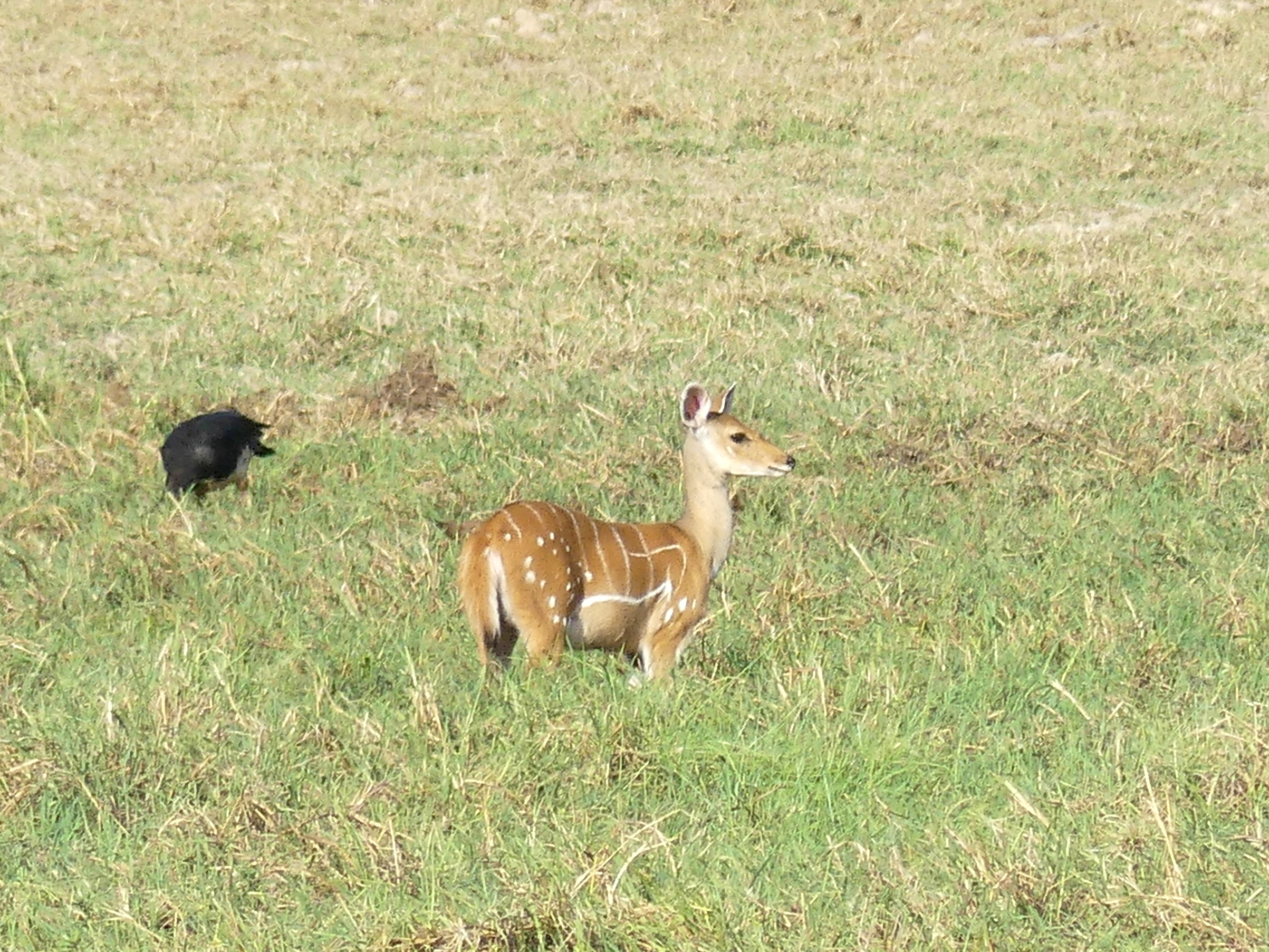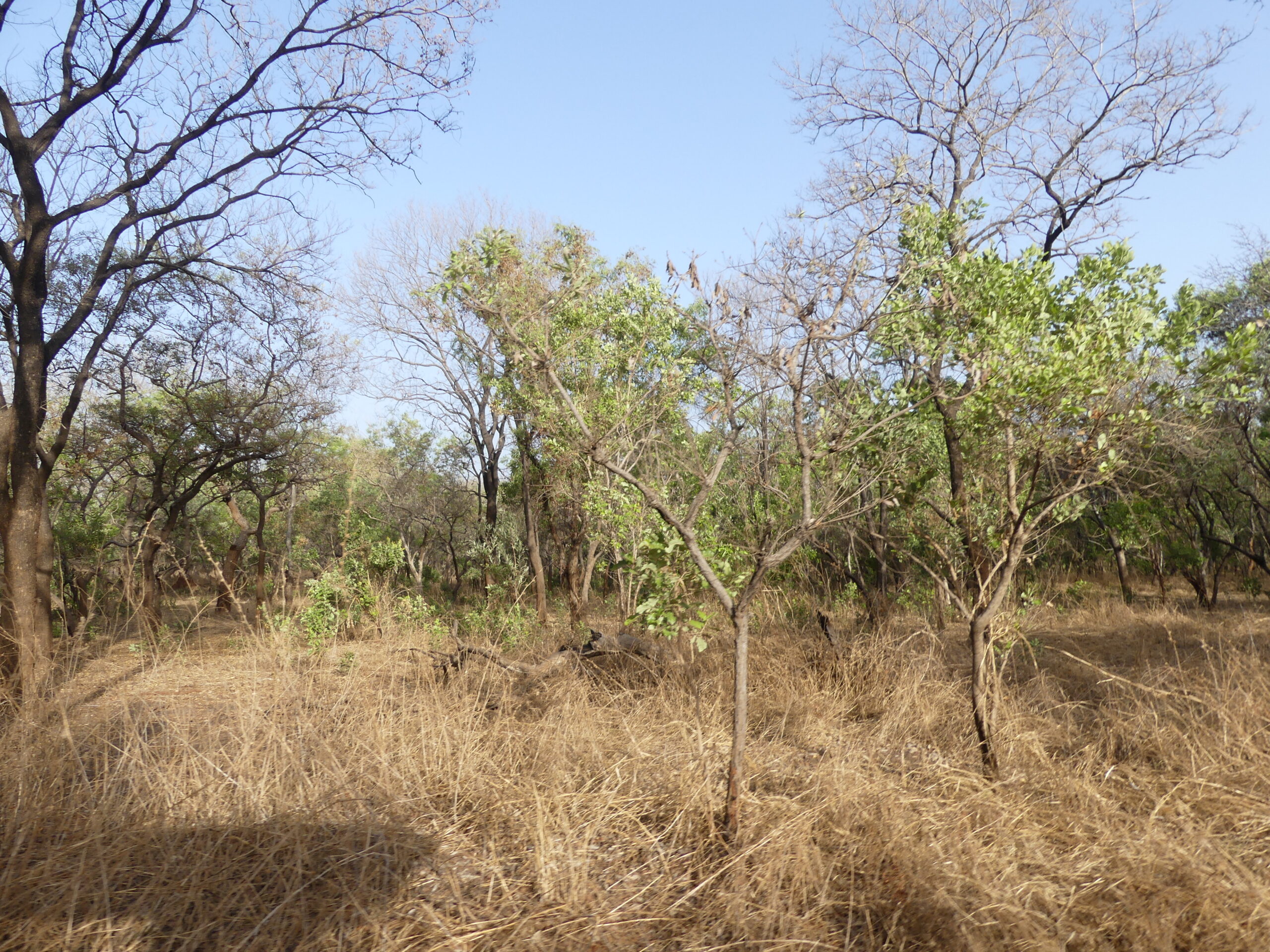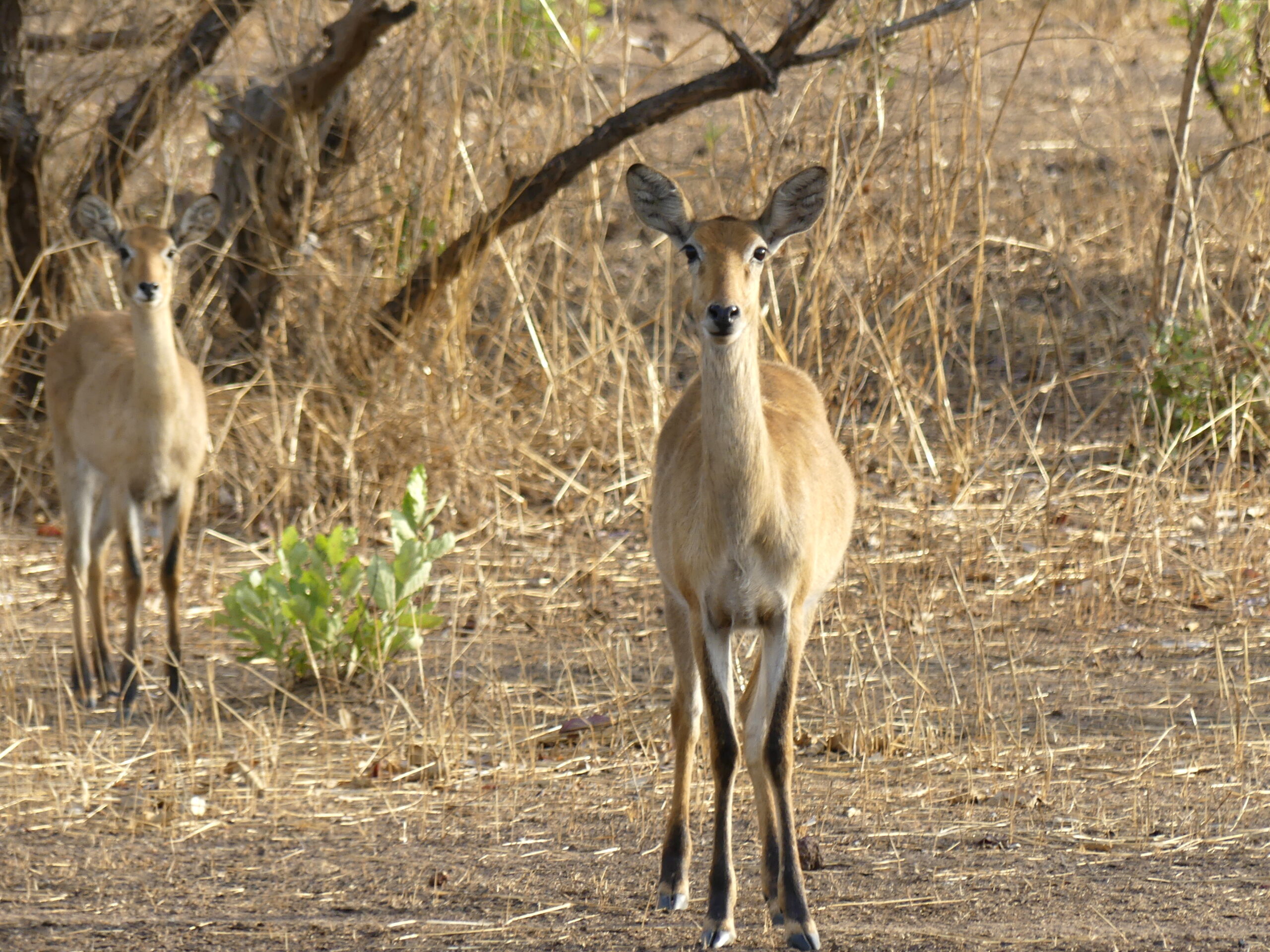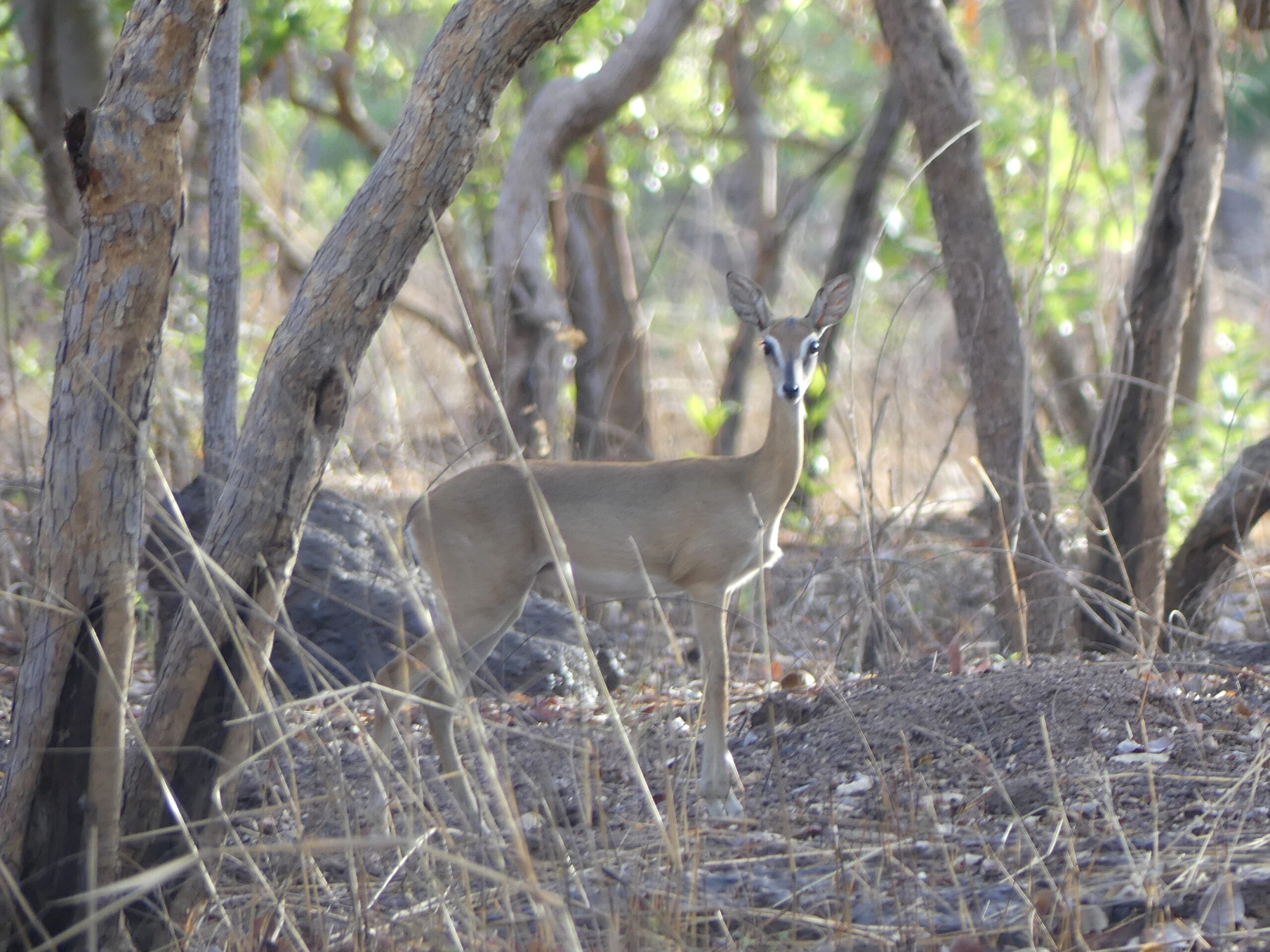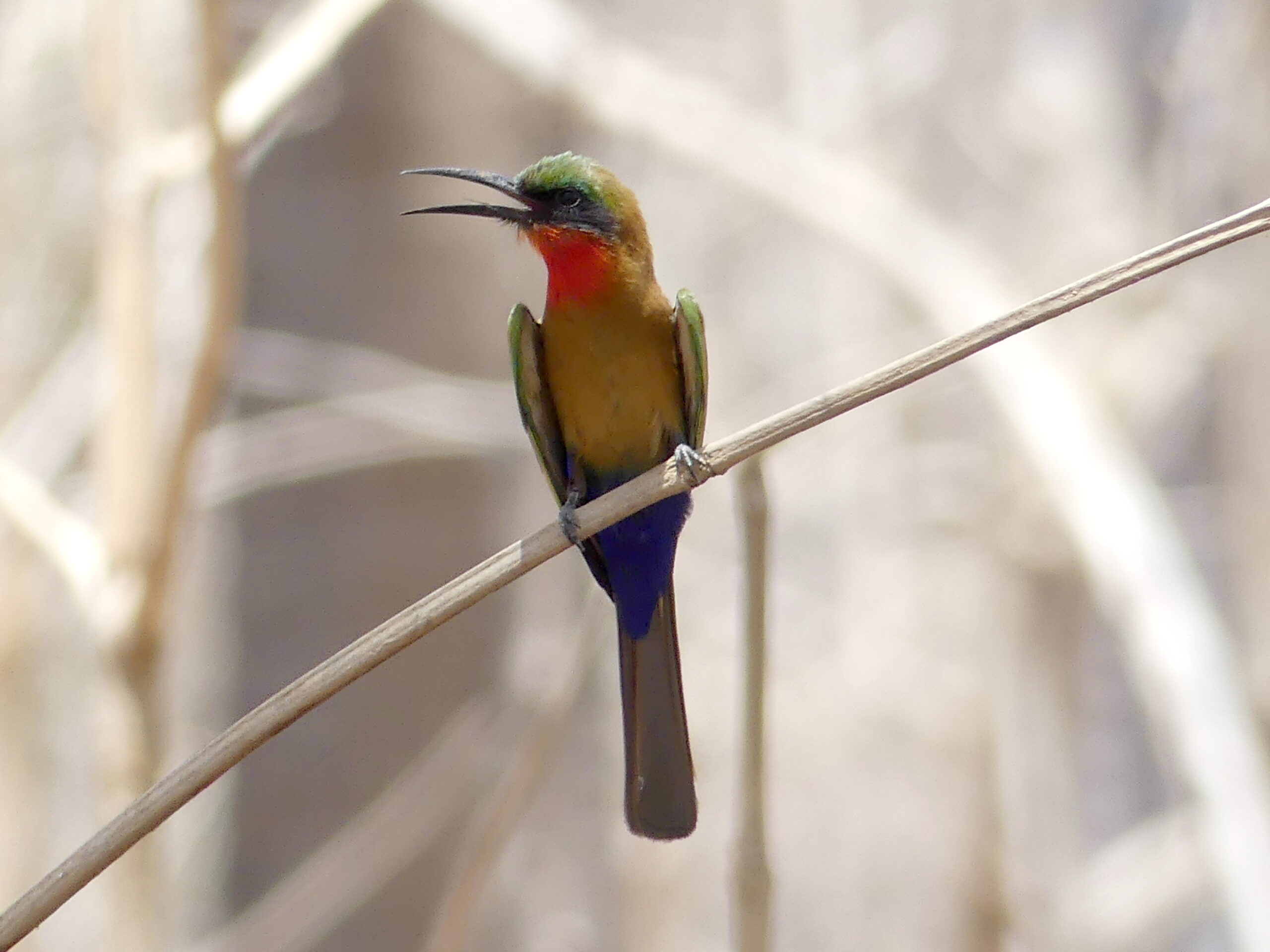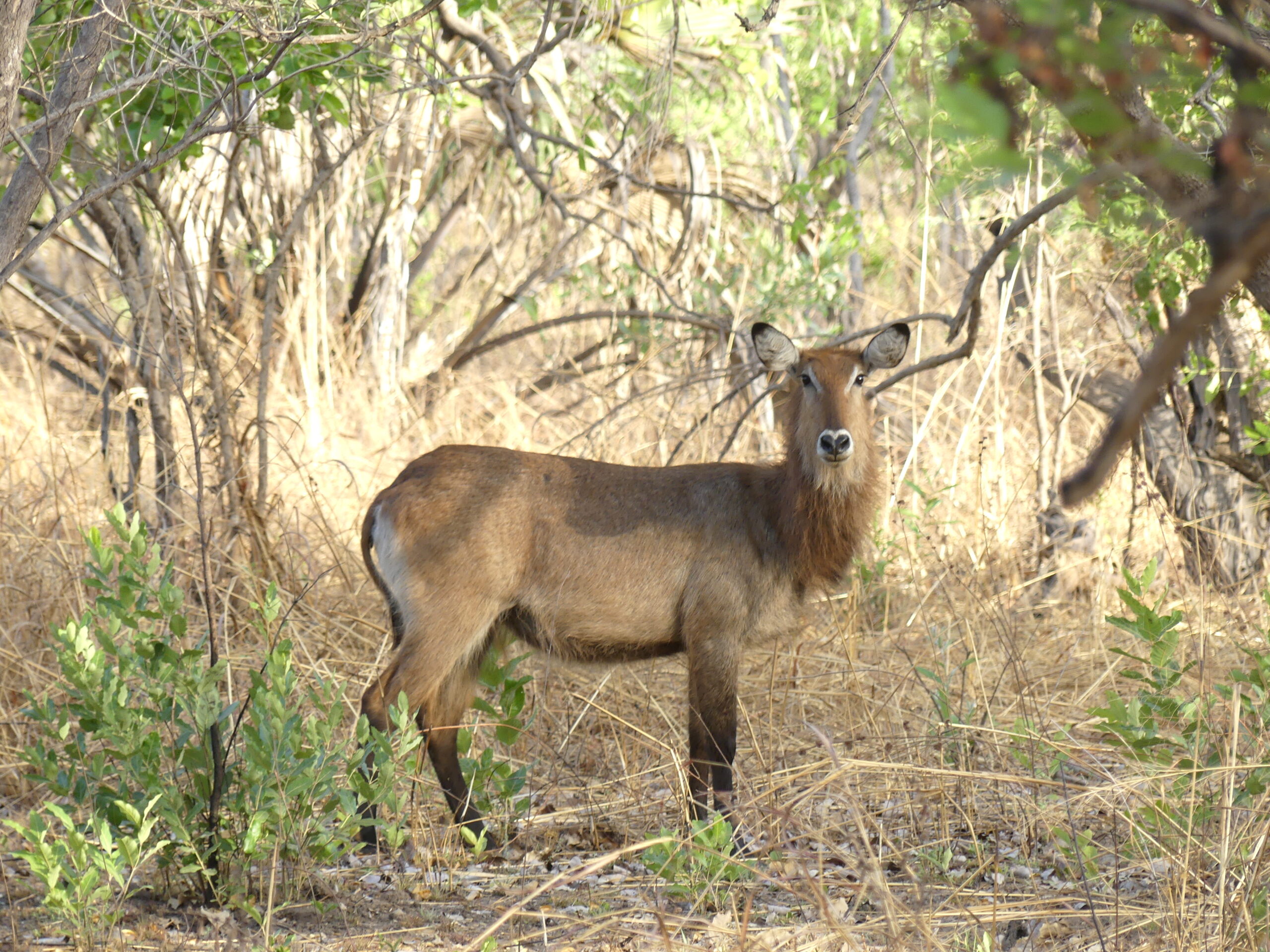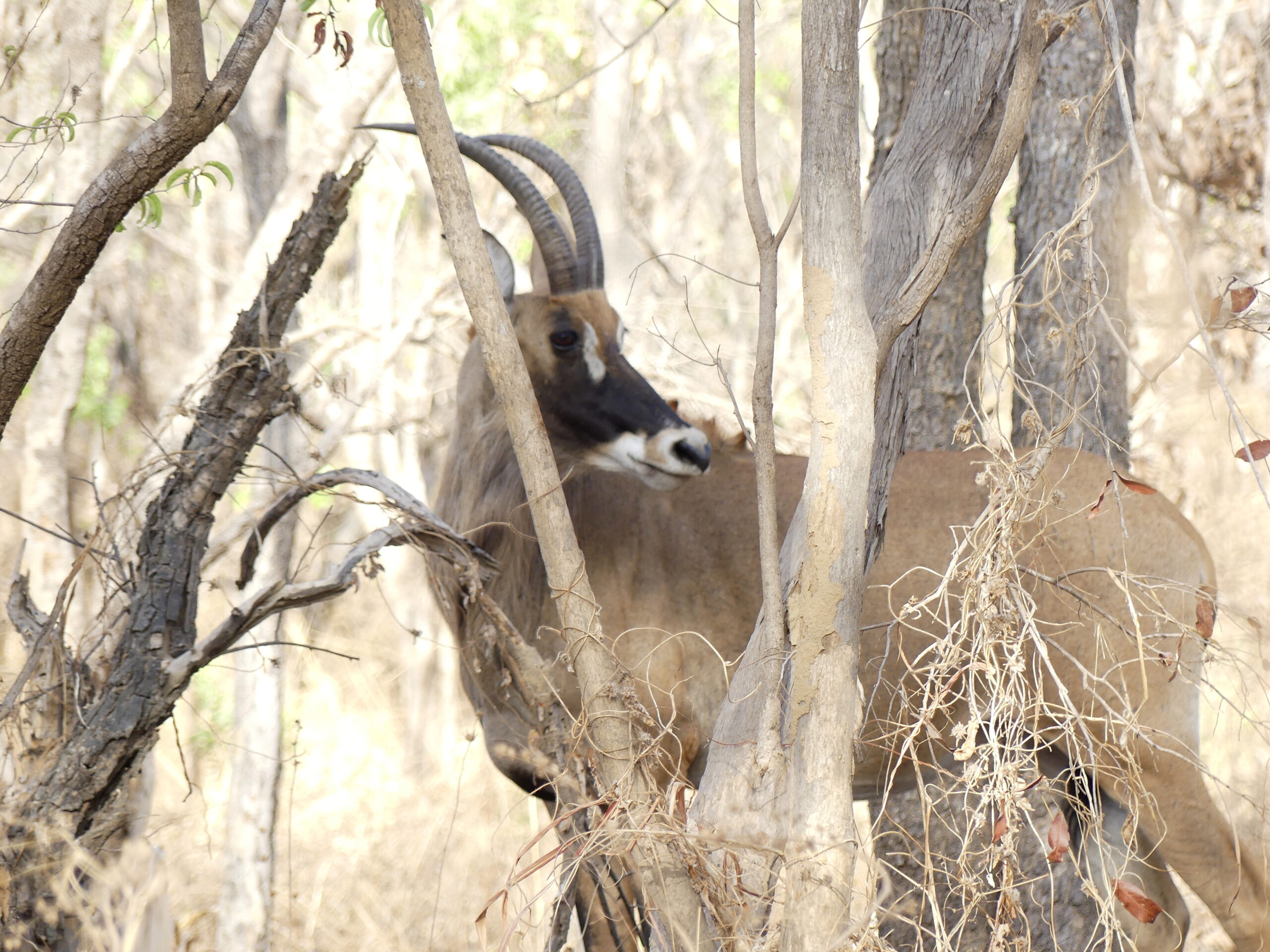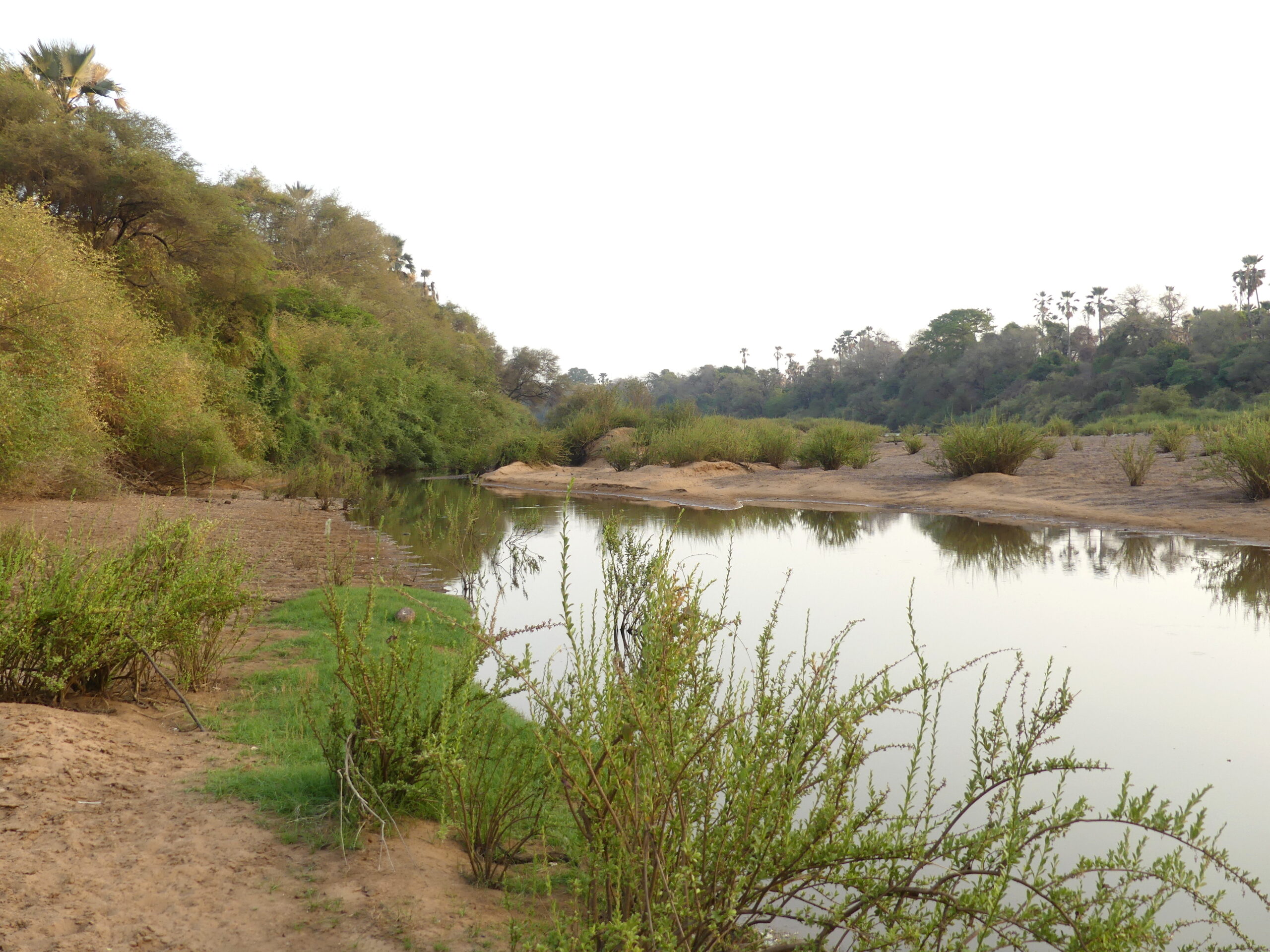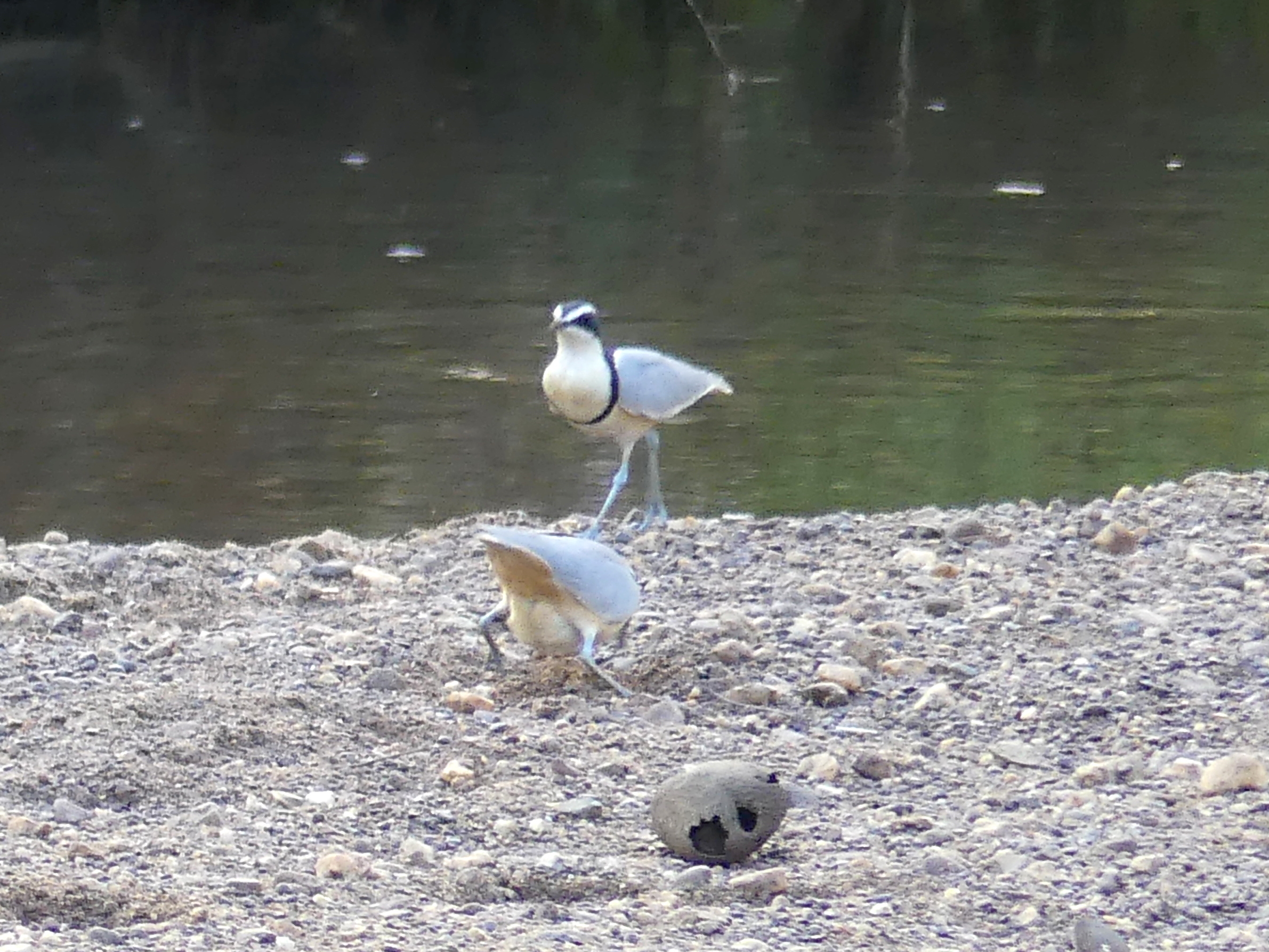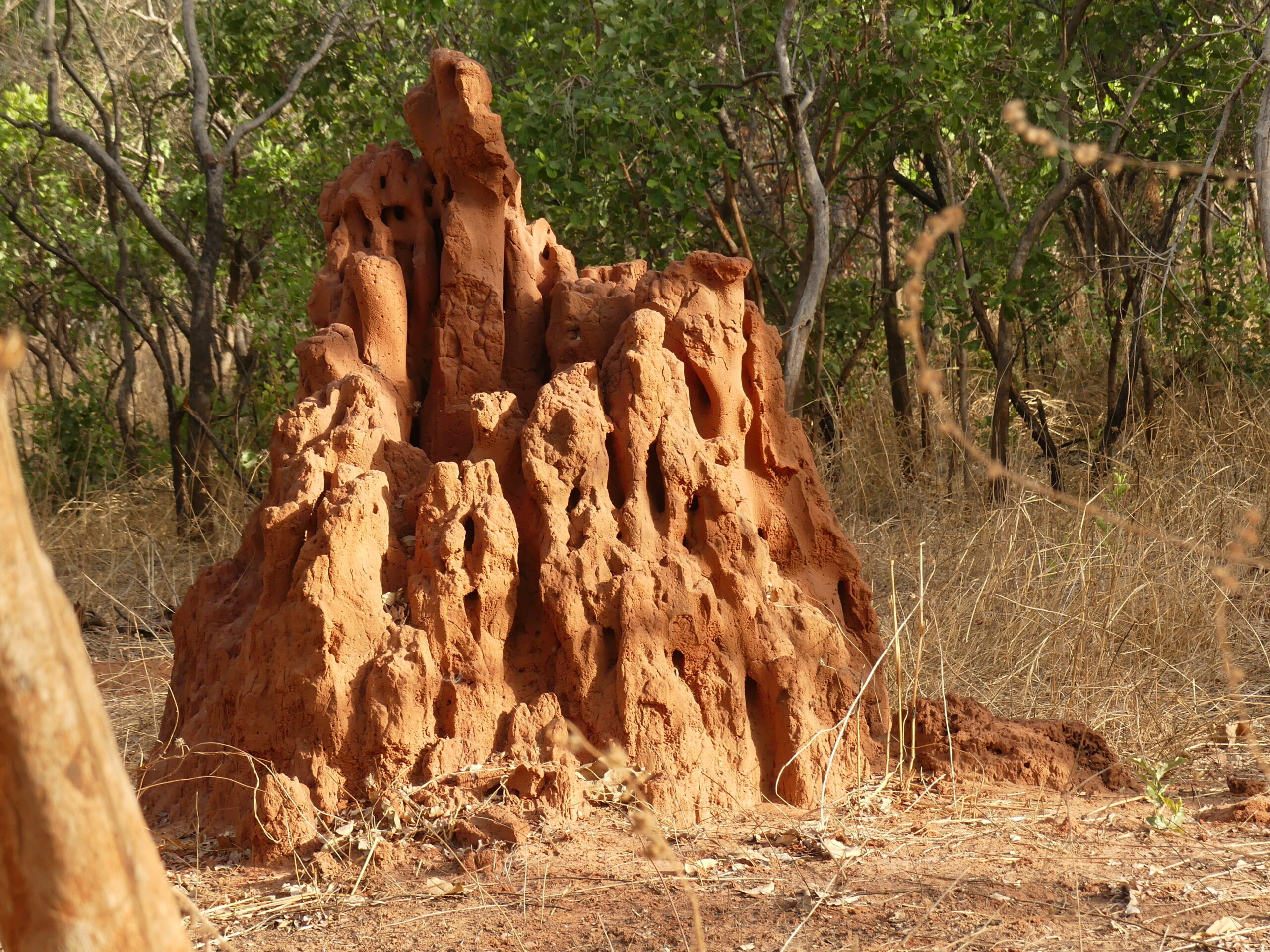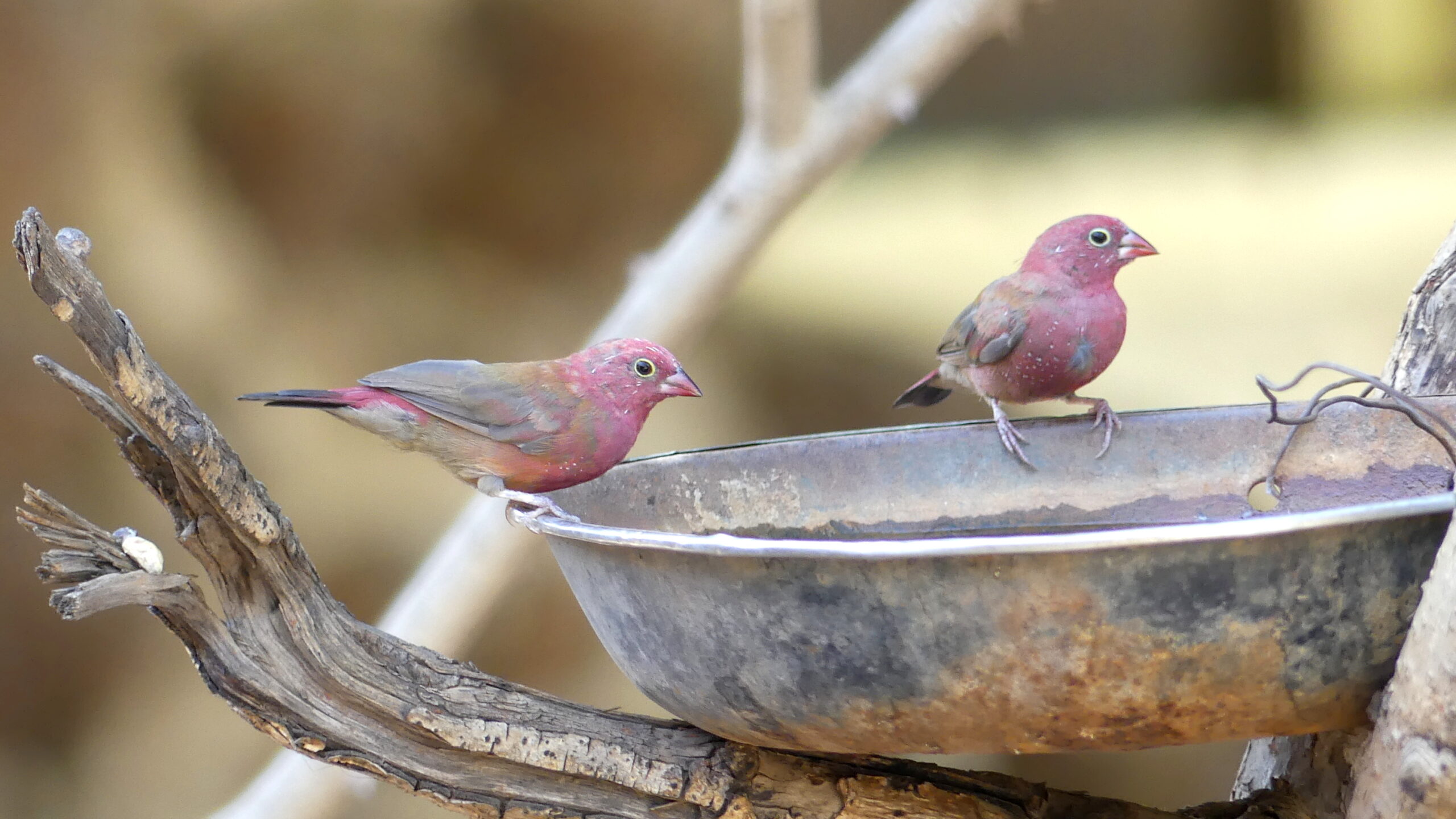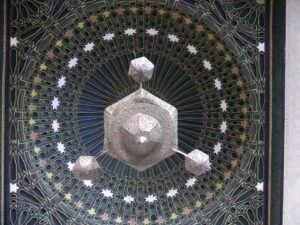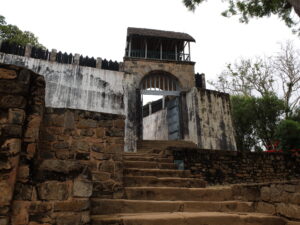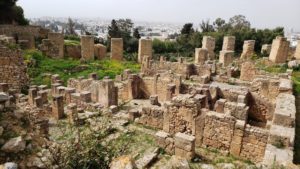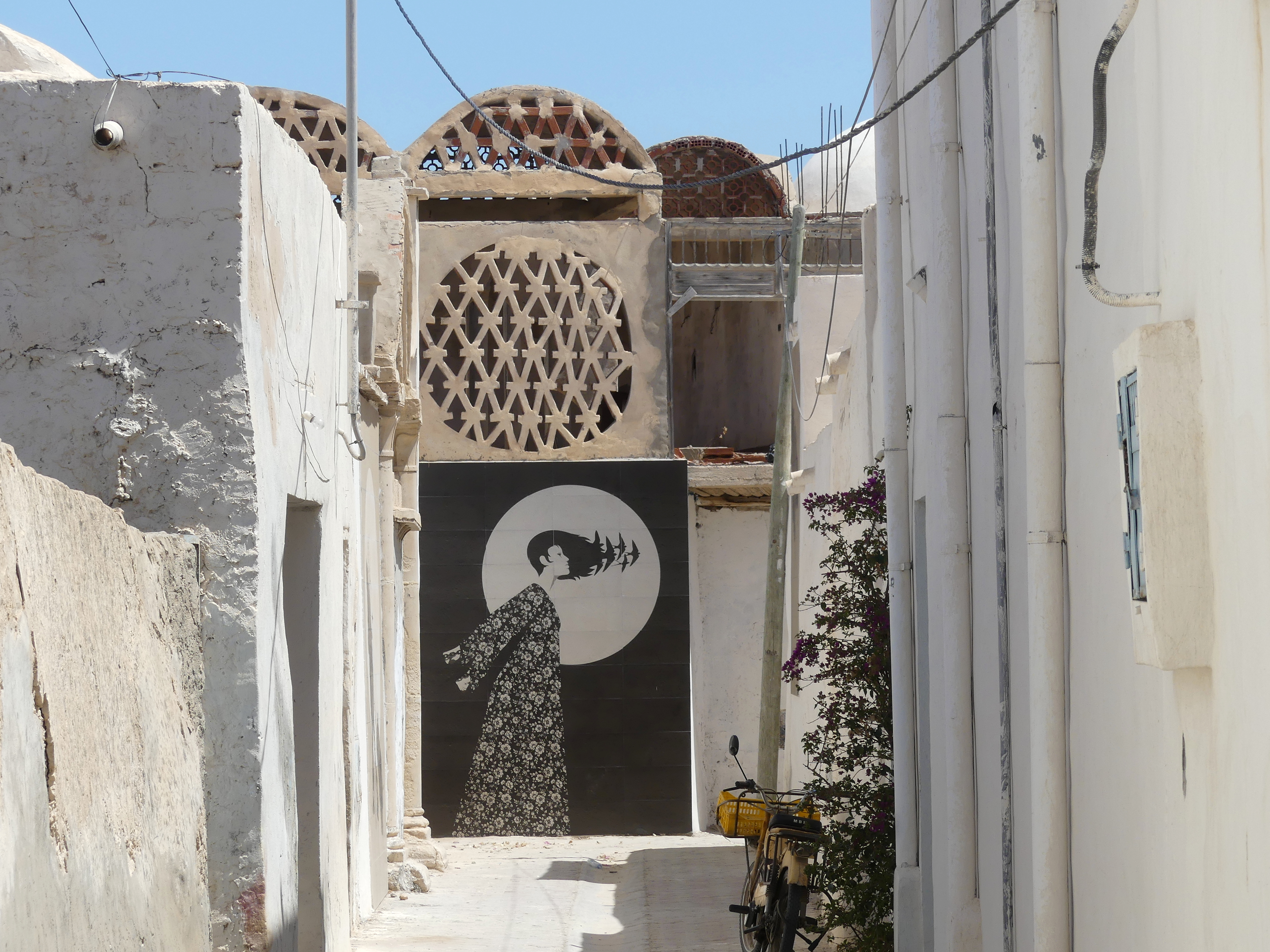We didn’t realize how much we missed the safari experience after a few years away from it. So we thoroughly enjoyed being back in the jeep “saddle” at two reserves in Senegal: Bandia, near the capital of Dakar, and the vast Niokolo Koba in the east.
Bandia
On our first full day in Senegal, our visit to Bendia made for a terrific start to our extensive visit to the country. Our expert guide uncovered many favorites and some new animals during our visit, but it was all a blast.
Welcome to Bandia!
“This way. No, this way.” Patas monkeys show a moment of indecision about where to see the animals.
This pond at Bandia reserve, normally much visited by the animals, shows off its large baobab tree. One can see many baobabs at Bandia, including some quite massive in girth. Aptly, the baobab is a symbol of Senegal – and the fruit makes a delicious snack or juice.
Barry and Alioune demonstrate the size of this historical baobab. In prior centuries, the animist Serer people of Senegal buried their griots (or prophetic story tellers) in the hollows of large baobab trees. They stopped the practice decades ago, but this tree at Bandia still houses the bones from one burial.
One of a pair of black-headed lapwings that squawked at us in defense of the eggs they laid on the ground. We quickly left them in peace.
The Forest Buffalo, a relative of the fiercer looking Cape buffalo, looks gentle enough, but is still not an animal you want to party with. Even today guides tell you what the colonial hunters of centuries ago knew: these are the most dangerous wild animals in Africa.
The giant eland (or more formally, the Western Giant Lord Derby Eland) is beautifully colored with a shaggy neck, but is most distinctive for its elk-like size and corkscrew horns. It’s only found in four western African countries, including Senegal. This herd joined in with some zebra, including a rare albino zebra just noticeable at the right toward the back.
The Cape Eland, which is smaller and more simply horned than the Giant Eland.
Bandia has several families of giraffes (as well as impala). Here one group feeds off the tall trees.
Red-billed hornbill hunting for fruits
One of a pair of white rhinos at Bandia. The two have not wanted to mate, so no offspring.
A striking, if furtive, Great Painted Snipe stays alert at the pond.
Niokolo
Niokolo Koba is a vast reserve in eastern Senegal that now stretches into the country of Guinea Conakry as well. We visited this UNESCO World Heritage site about two weeks after Bandia. We learned it had expanded greatly over time due to its success at sustaining an extraordinary variety of wild animals.
Several ecologies – savannah, wetlands, forest – foster nine varieties of antelope, hippos and crocs, hundreds of bird species, and numerous cat species including lions (hard to find, but we did locate a civet). On safari, even in the dry season, we found it enchanting.
The main route into Niokolo begins in woodland and savannah. Here is one attractive allee we admired on the way.
Abyssinian blue roller finds its place in one tree.
On a marshy plain, the smaller cape antelope lopes along with a larger waterbuck past Senegalese geese.
A bushbuck
Savannah landscape of Niokolo Koba
An intensely curious Cape Antelope
A ghostly figure, the Oribi antelope
Red throated bee-eater
Waterbuck showing off its shaggy coat
Our only sighting of a roan antelope one morning
The very eastern part of the Gambia River is close to its source. This portion lies just downstream from a makeshift wood footbridge that connects to Guinea Conakry. In rainy season, this whole area is underwater.
Alongside the bridge of the Gambia River, Egyptian plovers attracted our attention…for obvious reasons.
Termite cathedrals abound in the park, built from spit and clay
Red billed firefinches at the outskirts of the park, enjoying a drink near a spot where we too enjoyed a drink.
(To enlarge any picture above, click on it. Also, for more pictures from Senegal, CLICK HERE to view the slideshow at the end of the itinerary page.)


